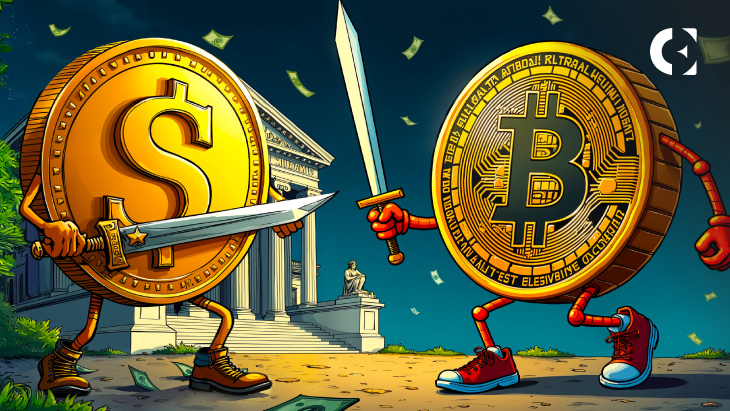The global economic system has been underpinned by fiat currencies, which are government-issued money that is not supported by a physical commodity. This has been the case for centuries. Worldwide trade, investment, and economic policy are facilitated by the US dollar, euro, yen, and other currencies. However, the emergence of cryptocurrencies has introduced a new competitor: digital, decentralized, and borderless money that challenges conventional concepts of control and value.
This poses a fundamental question: Will a borderless cryptocurrency transform the future economic system, or will fiat money continue to rule?
Comprehending the Conflict: Fiat and Cryptocurrency
In order to preserve economic growth and stability, fiat currencies depend on central banks and governments to issue money and regulate its supply. They are able to capitalize on their legal status, widespread acceptance, and established infrastructure.
In contrast, cryptocurrencies operate on decentralized blockchain networks, which are not regulated by any single authority. Their primary characteristics consist of:
* **Unrestricted accessibility:** Cryptocurrencies are accessible to all individuals with internet access, irrespective of their nationality.
* **Inflation-resistant:** Numerous cryptocurrencies have fixed or predictable issuance schedules, resulting in a restricted supply.
* **Transparency:** The recording of all transactions in public ledgers fosters transparency.
* **Programmability:** Smart contracts facilitate automated and intricate financial transactions.
Opportunities and tensions are generated by these distinctions.
Potential Benefits of a Borderless Currency
A borderless cryptocurrency that is broadly adopted could:
* **Decrease friction in international trade:** By eliminating currency exchange and associated fees. * **Enhance financial inclusion:** By providing banking services to unbanked populations. * **Accelerate speed and efficiency:** By settling transactions in seconds rather than days. * **Limit inflation:** Currencies with capped supplies could protect against devaluation. * **Foster innovation:** By enabling new financial products and decentralized applications.
A system of this nature could potentially decentralize economic power from the control of dominant fiat currencies and national policies.
Issues Cryptocurrencies Face as Global Money
Despite the potential, there are still numerous obstacles to overcome:
* **Volatility:** The fluctuation of prices discourages the use of cryptocurrency as a reliable medium of exchange. * **Regulatory resistance:** Governments may resist the loss of monetary control and encounter difficulties in enforcing tax and compliance laws. * **Adoption barriers:** Mass adoption necessitates user education, infrastructure, and trust. * **Energy consumption:** Certain blockchain networks necessitate substantial energy consumption, which raises sustainability concerns. * **Security risks:** The crypto space continues to be plagued by hacks and scams.
Significant advantages are maintained in these regions by fiat currencies, which are supported by institutional trust and sovereign authority.
Coexistence and Integration: The Middle Ground
The future economic system may not be a straightforward winner-takes-all conflict between crypto and fiat. Conversely, it is feasible to observe:
* **Central Bank Digital Currencies (CBDCs)**: Fiat currencies issued in digital form by governments, combining technology with trust. * **Stablecoins**: Crypto tokens pegged to fiat values, providing stability and ease of use. * **Hybrid financial systems**: Traditional banks and new crypto platforms collaborating to meet a variety of needs.
This coexistence has the potential to facilitate incremental transformation rather than abrupt replacement.
Final Thoughts: A New Economic Paradigm?
The emergence of cryptocurrencies has challenged long-standing beliefs regarding economic power, sovereignty, and money. The extent to which a borderless currency can significantly influence the next economic system is contingent upon technological advancements, regulatory changes, and societal acceptability.
The dialogue between crypto and fiat has already begun to alter our perspective on money, which is a certainty. The global economy will be either redefined in ways that have yet to be conceived or united by a genuinely borderless currency in the coming decades.

Leave a Reply